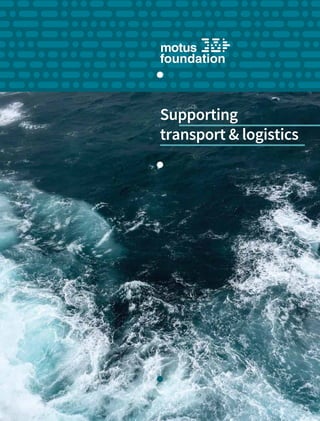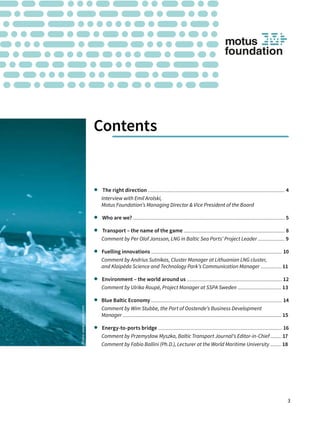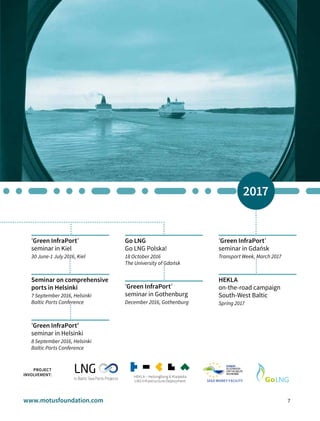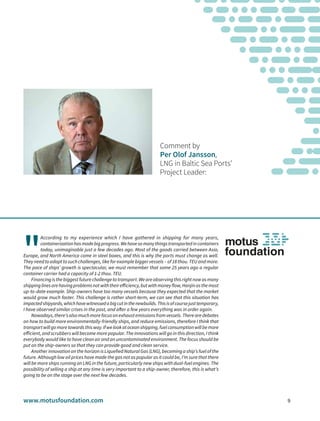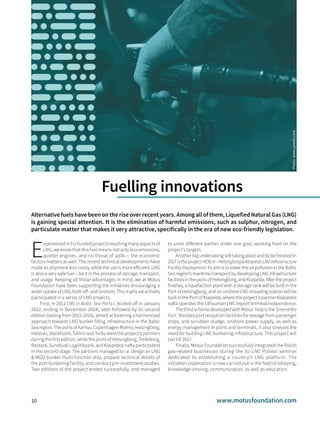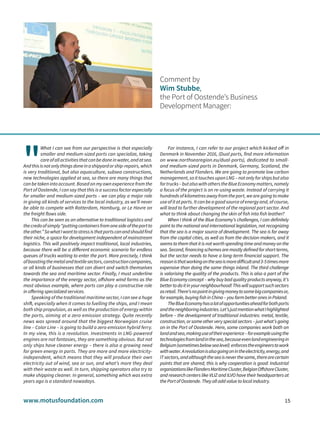Motus Foundation is a non-profit organization that aims to support the transport, logistics, energy, and blue economy sectors through research, conferences, and policy advocacy. It has been involved in several projects promoting liquefied natural gas (LNG) as a fuel, including the LNG in Baltic Sea Ports projects and the ongoing HEKLA project developing LNG infrastructure in Helsingborg and Klaipėda ports. Motus also participated in the 'Green InfraPort' project focusing on port facilities for waste management and alternative fuels like LNG. The organization works to promote innovative and environmentally-friendly technologies to reduce the impact of economic activities like transport and energy production on the environment.
